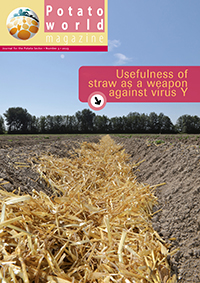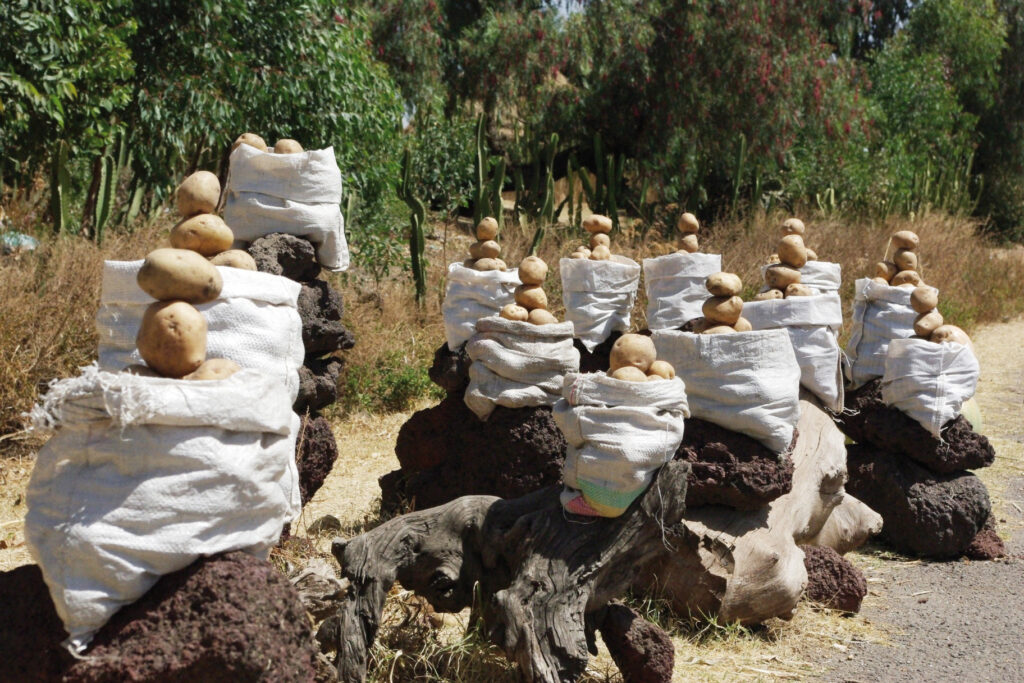Already a subscriber? Activate your premium account

Potatoworld Magazine

Potatoes processing at the industrial level is relatively insignificant in the tropical highlands of Africa such as in Ethiopia, Kenya, Uganda and Rwanda. No large international companies are present in this area whereas they have established themselves in North Africa – Egypt and South Africa. There are two reasons for the presence of large French fries (chips) and crisps factories in the North and the South of Africa.
One is the availability of growers who have relatively large areas of suitable land at their disposal which assures a year-round flow of raw material with the required specifications and consistency for the finished product. Another is the nearness of sufficient consumers with sufficient preferences and buying power. The two extremes of Africa meet these requirements for many years but the situation in the tropical highlands of the continent – so far – are different. During the last few years scientists of Wageningen University carried out research to investigate how value can be added to the potato crop in this part of the world. We focused on Rwanda and Ethiopia and wanted to know the challenges and opportunities for the establishment of (private) industrial processing facilities. Processing into finished products including the supply chain of graded, washed, packed and branded ware potatoes for high(er) end supermarkets. Such factories and installations would create added value through employment in the whole supply chain from breeding new varieties, creating a supply chain of seed and ware (raw material) potatoes, post-harvest handling, processing and trade.The production of Rwanda now is 2.2 million tons, with part of it used as seed and some export, the annual consumption of the country is 125 kg per capita. Over a 35 year period potato production raised three times faster than population growth. Potato production in sub-Saharan Africa in total doubled over the last 20 years. In Ethiopia with a population of about 90 million, per capita potato consumption is less than in Rwanda but the current 2 million tons produced on about 100,000 has increases rapidly.

Potato yields doubled due to the rapid replacement of the old European varieties by material introduced by the International Potato Center, assisted by rapid multiplication of clean material. The introduction and gradual spread of fertilizer and fungicides further help boosting the crop. The difference between attainable yields of about 40 tons per ha in a 110 day crop (note two crops per year can be grown) and actual yields of about 13 t/ha show that a further contribution of potato to the diet is just a matter of time with improved technology spreading further. We calculated production costs/farm gate prices of potatoes at about € 90/120 in Rwanda and € 70/90 in Ethiopia so the costs of raw material for processing is quite competitive with those of northern Europe and should stay so with yields increasing. Consumers in the capital pay about 50 % more for ungraded, unpacked and unwashed potato than farm gate price so the added value is very limited. Growers in Europe may receive € 130 per ton but consumers pay manifold this amount for potato and its products in various outlets.
We surveyed (super)markets, shops and restaurants in both countries and found out that French fries and crisps made in road side stalls and restaurants are well known and very popular. Imported processed products are used by star hotels and are found in few supermarkets. For crisps there is some cottage industry with the phone number of the producer as label. With urbanization and buying power of an emerging middle class increasing rapidly the need for branded supermarket fresh potato, frozen or chilled fries increases rapidly. Kenya was the first in the region with frozen products and chips and currently exports some to neighbouring countries. Uganda has a minute crisps factory selling some to Rwanda but more importantly a frozen French fries factory will open there in 2013. Ethiopia likely follows in 2014 and Rwanda is looking for investors and may follow in 2015. Admittedly many initiatives are subsided. Beside yield increase to reduce the costs of raw material, major challenges are the recovery determining aspects such as tuber size, shape, dry matter and sugar concentrations solved by the selection of proper varieties and use of proper crop management. Year round consistent supply involves the organization of many small holders in seed and processing potato growers groups. Africa is next in line to grow and bloom after Europe in the 19th century, America in the 20th and the current spurt of Asia. Potato processing is starting, but not from scratch.
Anton Haverkort
anton.haverkort@wur.nl
Events
©2015 - 2024 Potatoworld | Webdesign and realisation COMMPRO